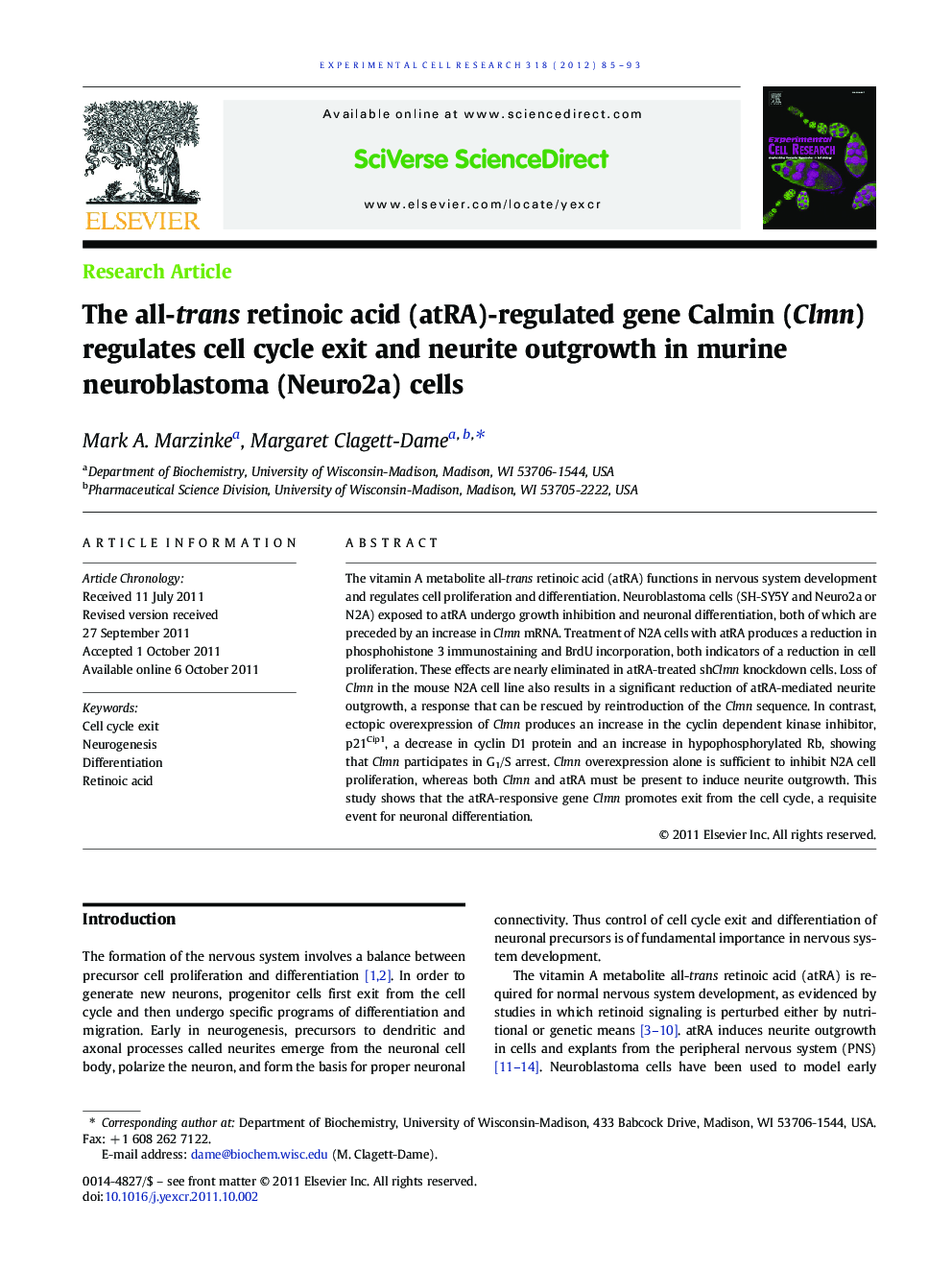| Article ID | Journal | Published Year | Pages | File Type |
|---|---|---|---|---|
| 2131143 | Experimental Cell Research | 2012 | 9 Pages |
The vitamin A metabolite all-trans retinoic acid (atRA) functions in nervous system development and regulates cell proliferation and differentiation. Neuroblastoma cells (SH-SY5Y and Neuro2a or N2A) exposed to atRA undergo growth inhibition and neuronal differentiation, both of which are preceded by an increase in Clmn mRNA. Treatment of N2A cells with atRA produces a reduction in phosphohistone 3 immunostaining and BrdU incorporation, both indicators of a reduction in cell proliferation. These effects are nearly eliminated in atRA-treated shClmn knockdown cells. Loss of Clmn in the mouse N2A cell line also results in a significant reduction of atRA-mediated neurite outgrowth, a response that can be rescued by reintroduction of the Clmn sequence. In contrast, ectopic overexpression of Clmn produces an increase in the cyclin dependent kinase inhibitor, p21Cip1, a decrease in cyclin D1 protein and an increase in hypophosphorylated Rb, showing that Clmn participates in G1/S arrest. Clmn overexpression alone is sufficient to inhibit N2A cell proliferation, whereas both Clmn and atRA must be present to induce neurite outgrowth. This study shows that the atRA-responsive gene Clmn promotes exit from the cell cycle, a requisite event for neuronal differentiation.
► Calmin is a retinoic acid-responsive gene. ► Calmin promotes cell cycle exit in N2A cells. ► Calmin overexpression increases p21Cip1 and decreases cyclin D1. ► Calmin is required for RA-induced growth inhibition and neurite outgrowth.
